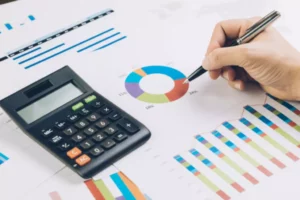Content

Financial statements are accounting reports that summarize a company’s activities and performance for a defined period of time, such as monthly or quarterly. The three key financial statements that companies generate are the income statement, the balance sheet and the cash flow statement. An accounting process records a company’s financial transactions for an accounting period to provide accurate details to the internal and external stakeholders. On the other hand, the budget cycle includes recording and analyzing the budget-based transaction a company decides to make for a future project.
- The eight-step accounting cycle is important to know for all types of bookkeepers.
- The second step is recording journal entries, where all transactions are recorded chronologically in the general journal.
- The balance sheet and income statement depict business events over the last accounting cycle.
- Double-entry accounting suggests recording every transaction as a credit or debit in separate journals to maintain a proper balance sheet, cash flow statement and income statement.
- We know the accounting cycle can seem daunting at times, so we wanted to cover common themes and answer your most urgent questions.
- Internal analysis – Using the accounting cycle gives businesses the information to make critical financial decisions.
A trial balance is a list of all the company’s accounts and their balance at the time the trial balance is prepared. An unadjusted trial balance is a trial balance https://www.bookstime.com/ that is prepared before adjusting entries are made into accounts. After entering all of your adjustments, the next step is to prepare an adjusted trial balance.
Using the accounting cycle for your finances
The balance sheet and income statement depict business events over the last accounting cycle. Most businesses produce a cash flow statement; while it’s not mandatory, it helps project and track your business’s cash flow. Creating an unadjusted trial balance is crucial for a business, as it helps ensure that total debits equal total credits in your financial records.
The last and final phase of bookkeeping is the preparation of the post-closing trial balance. This proves the accuracy of the accounting records at the end of the trading period. Financial statements are prepared at the end of each accounting period to understand the earnings and financial position of the business concern. The accounting cycle starts with the analysis of the transactions of the business in question.
Create financial statements.
The recording of such transactions in the books of accounts is known as adjusting entries. Such entries are usually made to adjust the income and expense accounts. Arguably one of the most intricate steps in the accounting process is the worksheet analysis. When you have credits and debits from your transactions that don’t balance (as in one cancels the other) you have to make corrective adjustments accordingly. The first step of the accounting process is the analysis of the transactions. First, the accountants collect, identify, and classify receipts, invoices, and other financial data.
Modifications for accrual accounting versus cash accounting are usually one major concern. The accounting cycle is used comprehensively through one full reporting period. Thus, staying organized throughout the process’s time frame can be a key element that helps to maintain overall efficiency. Most companies seek to analyze their performance on a monthly basis, though some may focus more heavily on quarterly or annual results.
What Are Some of the Advantages and Disadvantages of Accounting?
Next, the professionals read the collected data, check each transaction that occurred, and note the reasons that led to those transactions. Finally, they put it under the right label and determine their impact on different accounts based on their analysis. The accounting cycle is an eight-step process that accountants and business owners use to manage the company’s books throughout a specific accounting period, such as the fiscal year. Following the eight-step accounting cycle can help you accurately record all financial transactions, catch and correct errors and balance your books at the end of each fiscal year before you close them. The accounting cycle is an eight-step process that accountants and business owners use to manage a company’s books throughout a particular accounting period—typically throughout the fiscal year (FY). The federal government’s fiscal year spans 12 months, beginning on October 1 of one calendar year and ending on September 30 of the next.
What are the 10 steps in accounting cycle?
The ten steps are analyzing transactions, journalizing transactions, post transactions, preparing an unadjusted trial balance, preparing adjusting entries, preparing the adjusted trial balance, preparing financial statements, preparing closing entries, posting a closing trial balance, and recording reversing entries.
For example, if you want to see the changes in cash levels over the course of the business and all their relevant transactions, you would look at the general ledger, which shows all the debits and credits of cash. The main purpose of the accounting cycle is to ensure the accuracy and conformity of financial statements. Although most accounting is done electronically, it is still important to ensure everything is correct since errors can compound over time. Finally, a company ends the accounting cycle in the eighth step by closing its books at the end of the day on the specified closing date. The closing statements provide a report for analysis of performance over the period. While the steps of the accounting cycle are typically the same for most companies, a business must be consistent in its approach should it decide to do anything differently.
What is the Accounting Cycle?
You need to know about revenue recognition (when a company can record sales revenue), the matching principle (matching expenses to revenues), and the accrual principle. After closing, the accounting cycle starts over again from the beginning with a new reporting period. Closing is usually a good time to file paperwork, plan for the next reporting period, and review a calendar of future events and tasks. Most importantly, the accounting cycle helps companies comply with government bodies and stakeholders. However, public companies must take the extra step and find an outside auditor who determines whether all steps were followed correctly. Utilizing great tools to automate accounting processes will not only make your job easier but will also lessen the overall load that accompanies keeping your books.
In addition, the transactions will have the date, amount, and location for future reference. This new trial balance is called an adjusted trial balance, and one of its purposes is to prove that all of your ledger’s credits and debits balance after all adjustments. The ledger is a large, numbered list showing all your company’s transactions and how they affect each of your business’s individual accounts. If you’re accounting cycle looking for any financial record for your business, the fastest way is to check the ledger. The proper order of the accounting cycle ensures that the financial statements your company produces are consistent, accurate, and conform to official accounting standards (such as IFRS and GAAP). The accounting cycle is a process businesses use to track their financial performance over a specific period of time.

